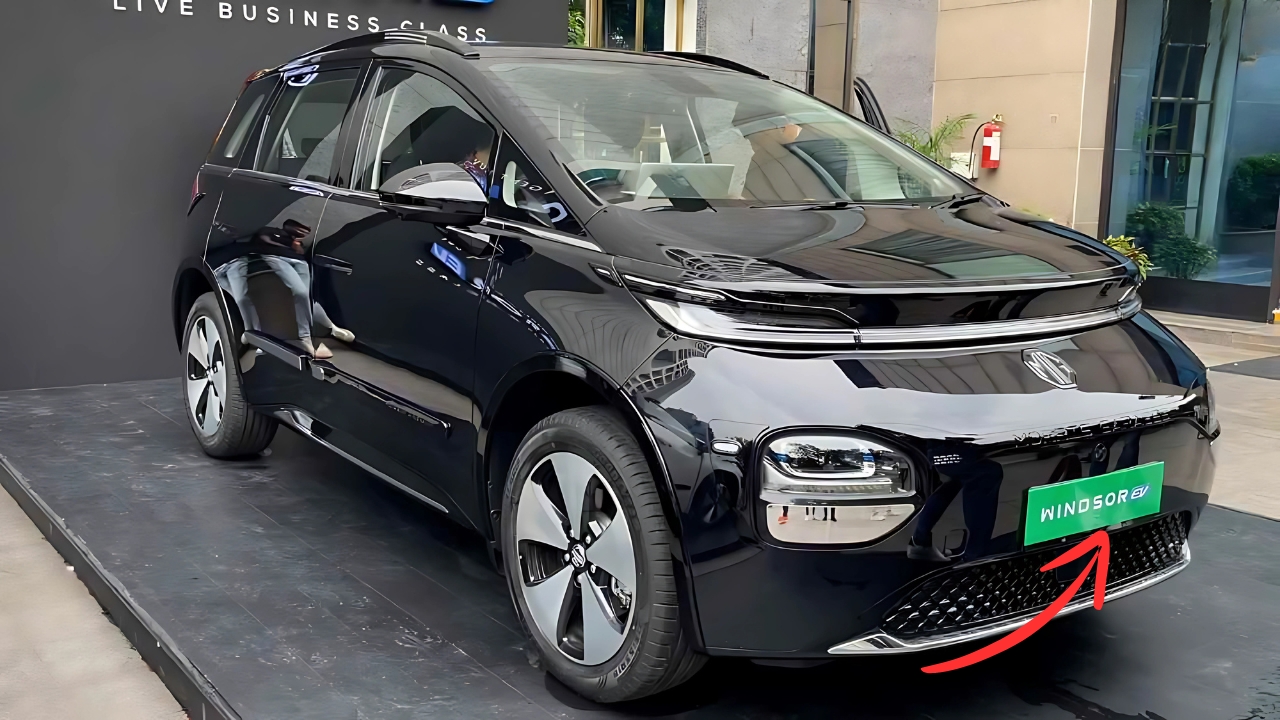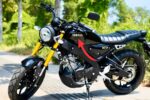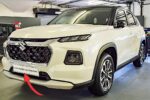The MG Windsor EV: represents a significant expansion of MG Motor’s electric vehicle portfolio, strategically positioned to address growing consumer interest in accessible electric mobility.
As part of the brand’s comprehensive electrification strategy, this compact electric SUV demonstrates how thoughtful design and feature prioritization can create a compelling proposition for consumers considering the transition to electric vehicles without premium pricing.
The MG Windsor EV: Design Philosophy and Exterior Aesthetics
The Windsor EV embraces a design language that balances contemporary EV aesthetics with practical SUV functionality.
The front fascia features a closed-off grille treatment typical of electric vehicles, flanked by sleek LED headlamps with distinctive daytime running light signatures.
This lighting arrangement creates immediate brand recognition while providing superior illumination compared to halogen alternatives.
The profile maintains compact SUV proportions with subtle design elements that enhance aerodynamic efficiency—a critical consideration for maximizing electric range.
The slightly sloping roofline and carefully sculpted side panels reduce drag coefficient while maintaining interior headroom and practical utility.
Available in multiple color options including dual-tone combinations, the exterior finish provides meaningful personalization opportunities.
Dimension-wise, the vehicle measures approximately 4,270mm in length, 1,820mm in width, and 1,650mm in height, with a wheelbase of around 2,600mm.
These proportions maximize interior space while maintaining urban-friendly exterior dimensions for easy maneuverability and parking.
Design elements like flush door handles, aerodynamically optimized wheels, and subtle blue accents throughout the exterior establish visual consistency with MG’s electric vehicle lineup while differentiating from internal combustion alternatives.
Interior Design and Technology
The cabin design prioritizes perceived spaciousness and material quality, with a driver-centric layout that emphasizes intuitive operation.
The horizontal dashboard arrangement incorporates a floating-style touchscreen infotainment display that serves as the technological focal point.
Physical controls for critical functions complement touch inputs, ensuring operational simplicity across varied user demographics.
The seating arrangement accommodates five occupants with reasonable comfort despite compact external dimensions.
The front seats provide adequate support with ventilation functionality on higher variants—a particularly valuable feature in regions with warm climates.
The rear bench offers acceptable legroom considering the vehicle’s footprint, with a nearly flat floor enhancing middle passenger comfort—a specific advantage of dedicated electric vehicle architecture.
Storage solutions demonstrate practical consideration, with a rear cargo capacity of approximately 350 liters, complemented by multiple cabin storage compartments addressing everyday carrying requirements.
The absence of transmission tunnel creates additional space for center console storage not typically available in comparable internal combustion vehicles.
Material selection balances sustainability with visual appeal, incorporating recycled fabrics and responsibly sourced materials that reduce environmental impact while maintaining premium feel.
The interior color palette emphasizes light tones that enhance spatial perception while creating a distinctive atmosphere appropriate for next-generation mobility.
Technology Integration
The technology package centers around a 12.3-inch touchscreen infotainment system featuring wireless Apple CarPlay and Android Auto connectivity.
The interface design prioritizes legibility and straightforward operation with customizable layouts.
The digital instrument cluster provides comprehensive information including range estimation, energy consumption metrics, and regenerative braking status.
Connected car technology through MG’s iSMART system offers over 60 features including remote climate conditioning, charging status monitoring, and geofencing capabilities.
Voice recognition functionality provides hands-free operation of essential features, reducing driver distraction during operation.
Advanced driver assistance systems include adaptive cruise control, autonomous emergency braking, lane keeping assistance, and blind-spot monitoring—features increasingly expected in this segment regardless of propulsion type.
The 360-degree camera system aids maneuvering in confined spaces, while automated parking assistance handles parallel and perpendicular parking scenarios with minimal driver intervention.
Electric Powertrain and Performance
The Windsor EV utilizes a single front-mounted electric motor producing approximately 130 kW (174 horsepower) and 290 Nm of instant torque—delivering responsive performance appropriate for urban and suburban driving environments.
This configuration enables 0-100 km/h acceleration in approximately 8.5 seconds, providing adequate performance for everyday driving scenarios without prioritizing outright acceleration.
Battery technology centers around a lithium-ion pack with approximately 50 kWh capacity, delivering ARAI-certified range between 340-360 kilometers on a single charge under standard testing conditions.
The battery incorporates active thermal management systems that maintain optimal operating temperature across varied climate conditions, preserving both performance and longevity.
Three selectable driving modes—Eco, Normal, and Sport—modify power delivery characteristics according to driver preference and range requirements.
Regenerative braking offers multiple intensity levels, from light recuperation suitable for highway cruising to more aggressive energy recovery that enables near one-pedal operation in urban environments.
Charging Infrastructure and Practicality
Charging capabilities include support for DC fast charging at rates up to 80 kW, enabling 30-80% capacity restoration in approximately 30 minutes under optimal conditions.
This implementation acknowledges the evolving charging infrastructure while providing practical flexibility for longer journeys.
Home charging utilizes standard AC infrastructure through a 7.4 kW onboard charger that delivers complete charging in approximately 7-8 hours, addressing the predominant charging pattern for private owners.
The vehicle supports scheduled charging functionality, allowing owners to take advantage of off-peak electricity rates where applicable.
MG’s approach to charging infrastructure includes dealership-based fast chargers, partnerships with existing charging networks, and optional home charging equipment installation.
This ecosystem approach acknowledges how charging infrastructure availability influences electric vehicle adoption, particularly in markets where public charging remains developing.
Value Proposition and Market Positioning
The Windsor EV’s pricing strategy positions it competitively within the compact SUV segment, acknowledging that affordability remains critical for mainstream electric vehicle adoption.
Government incentives further enhance the value proposition in many markets, reducing the effective price gap between electric and internal combustion alternatives.
The ownership experience extends beyond the initial purchase price to include reduced operating costs through lower per-kilometer energy expenses and simplified maintenance requirements.
MG’s warranty coverage includes specific battery protection extending to 8 years/150,000 kilometers, addressing common consumer concerns regarding electric vehicle longevity.
The MG Windsor EV:
The MG Windsor EV represents a thoughtful approach to electric vehicle development, focusing on practical usability and value rather than specification maximization.
By delivering reasonable range, comprehensive features, and attractive styling at accessible price points, MG has created a compelling option for consumers considering the transition to electric mobility.
As electric vehicle adoption continues accelerating globally, vehicles like the Windsor EV play a crucial role in broadening market penetration beyond early adopters to more mainstream consumers.
This balanced approach acknowledges current market realities while contributing meaningfully to the ongoing transition toward sustainable transportation.





